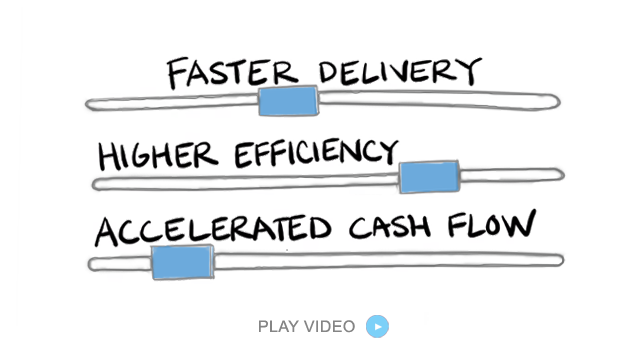Integrating Digital Technologies to Optimize Processes and Ensure Quality and Regulatory Compliance in Medical Manufacturing
In the ever-evolving landscape of medical manufacturing, the demand for precision, compliance, and efficiency has never been greater. As a Production Planner, you're at the nexus of operational efficiency and regulatory stringency—balancing delivery schedules with quality protocols, and meeting customer needs without compromising on compliance.
Today, digital technologies offer a transformative edge. Through strategic integration—particularly solutions like PlanetTogether APS connected with enterprise systems such as SAP, Oracle, Microsoft Dynamics, Kinaxis, or Aveva—production planning is no longer a reactive process, but a proactive engine driving quality, compliance, and competitiveness.
In this blog, we’ll explore how integrating digital technologies can help optimize your production processes while safeguarding regulatory compliance in medical manufacturing.
The Pressure Points in Medical Manufacturing
The stakes are high in medical manufacturing. Unlike other sectors, non-compliance can not only lead to financial loss but can also pose real threats to patient safety. Your production environment is governed by:
FDA and ISO 13485 compliance standards
Strict documentation and traceability protocols
Tight change control requirements
High product complexity and short shelf-life materials
Frequent audits and validation needs
Add to this the operational complexities: multiple production lines, resource constraints, supplier variability, and high product customization. This is where digital technology becomes your strategic ally.

From Manual Planning to Smart Scheduling
Historically, production planning in medical manufacturing has relied heavily on spreadsheets, siloed ERP systems, or homegrown tools that lack the flexibility and intelligence to handle today’s dynamic demands.
PlanetTogether Advanced Planning and Scheduling (APS) software changes the game. When integrated with platforms like SAP S/4HANA, Oracle NetSuite, or Microsoft Dynamics 365, it brings real-time visibility and optimization to your production workflows.
Here’s how:
Automated Scheduling: With real-time data from your ERP, PlanetTogether auto-generates optimized schedules that account for machine availability, material constraints, and labor capacity—all while respecting regulatory hold times and validations.
Scenario Planning: What happens if a supplier shipment is delayed? Or if a cleanroom is offline for maintenance? PlanetTogether allows you to run “what-if” simulations without disrupting operations—keeping compliance intact.
Batch Tracking & Traceability: Integration ensures that every lot and batch is tracked across the lifecycle. This is critical for meeting FDA CFR Part 11 and EU MDR traceability requirements.
Enabling Compliance Through Digital Workflows
Integration between PlanetTogether and systems like Kinaxis RapidResponse or Aveva MES empowers compliance from the ground up.
Digital SOP Alignment: SOPs can be linked directly to production orders. For example, a new lot of Class II medical devices may trigger a specific validation protocol, which is auto-assigned and tracked in the MES. This eliminates human error and ensures SOP adherence.
Electronic Batch Records (EBR): Data captured through integrated platforms ensures complete, accurate, and tamper-proof records. This not only supports audit readiness but accelerates lot release by streamlining QA review.
Change Management & Version Control: Integrated systems enable traceability of every change—whether it’s a formulation tweak or a packaging update—ensuring that only validated versions move to production.
Predictive Analytics and Preventive Quality
One of the biggest benefits of integrating digital technologies is the ability to shift from reactive to preventive quality assurance.
When PlanetTogether is connected to ERP or MES systems, real-time production data can be fed into predictive models. Here’s how this benefits you as a Production Planner:
Quality Trend Detection: Spot patterns before they become problems. For instance, rising rework rates on a particular product line may indicate calibration drift in a critical machine—enabling preemptive maintenance.
Supplier Risk Management: Integrated data from SAP or Oracle can be used to assess supplier performance over time, helping you avoid high-risk vendors that compromise quality.
Yield Optimization: Analytics can identify best-performing recipes or workflows, allowing planners to replicate success across production lines—improving yield without compromising compliance.
Collaborative Planning Across Functions
Production planning doesn’t happen in a vacuum. Success depends on real-time collaboration between departments—procurement, quality assurance, R&D, and logistics. That’s where digital integration truly shines.
By integrating PlanetTogether with systems like Microsoft Dynamics 365 Supply Chain Management, cross-functional teams can access a single source of truth. Here’s what that looks like in practice:
QA sees the production schedule and plans inspections and validations accordingly.
Purchasing sees material demand forecasts, enabling early supplier communication and buffer planning.
Regulatory affairs monitors product genealogy and traceability metrics for compliance reporting.
Executive teams track KPIs like OTIF (On-Time-In-Full), yield rates, and batch release times from a unified dashboard.
This synergy not only reduces errors and delays but builds a more agile, audit-ready organization.
Real-Time Decision-Making with Connected Data
In medical manufacturing, delays cost more than money—they cost trust. When systems are fragmented, even minor disruptions—like a delayed sterilization cycle or a mislabeling event—can ripple into major compliance issues.
But with a fully integrated ecosystem, powered by tools like PlanetTogether + Aveva MES or SAP, Production Planners can act fast:
Adjust schedules instantly in response to production floor issues
Reallocate capacity and materials to prevent line stoppages
Notify QA or Regulatory teams of deviations in real-time
Instead of fighting fires, you’re planning with foresight—and always one step ahead of compliance audits.

Implementation Considerations: Getting It Right
Integrating PlanetTogether with your ERP or MES system doesn’t happen overnight—but it’s worth the effort. Here are a few tips to make it successful:
Map your existing processes: Understand how information flows today, and where bottlenecks occur.
Engage cross-functional stakeholders early: IT, Quality, Production, and Compliance all have valuable perspectives.
Prioritize data quality and standardization: Integration is only as good as the data that fuels it.
Start with a pilot: Choose a representative product line or facility to test integration before rolling out enterprise-wide.
Most importantly, choose the right integration partner—one with experience in medical manufacturing and a deep understanding of both planning and compliance workflows.
Digital transformation in medical manufacturing isn’t just about automation—it’s about enabling smarter decisions, ensuring patient safety, and staying ahead of regulatory demands.
As a Production Planner, your role is evolving from task executor to strategic orchestrator. With the integration of PlanetTogether APS and platforms like SAP, Oracle, Microsoft, Kinaxis, or Aveva, you can lead the charge in building a more resilient, compliant, and high-performing operation.
In an industry where every product can save a life, there is no room for guesswork. Digital integration is the blueprint for consistent quality, operational excellence, and sustained regulatory confidence.
Are you ready to take your manufacturing operations to the next level? Contact us today to learn more about how PlanetTogether can help you achieve your goals and drive success in your industry.
Topics: Automated Scheduling, PlanetTogether Software, Integrating PlanetTogether, Scenario Planning, Medical Manufacturing, Batch Tracking & Traceability, Enabling Compliance Through Digital Workflows, Predictive Analytics and Preventive Quality, Collaborative Planning Across Functions, Real-Time Decision-Making with Connected Data





















LEAVE A COMMENT